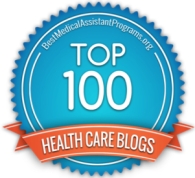When the Affordable Care Act is fully implemented in 2014, Americans will finally have the opportunity to purchase private insurance through one of the new state-based insurance exchanges. As I, and others, have said, the best way to think about this is to imagine the exchange like a travel website (e.g., Orbitz, Expedia, Travelocity) with insurance plans playing the role of airline carriers. If you were planning a trip, you’d go online and find the itinerary or airline that you prefer. Similarly, for health insurance, you would visit the exchange, shop around, and select the plan that’s right for you.
One of the big things this does is makes information on price and benefits more transparent, hopefully leading to free-market competition that will help to keep health care costs low. Of course, recognizing that the benefit design of most health insurance plans is extremely complex, and that the attention span of most Americans is extremely short, the government also set a benchmark for plans to help consumers know what they’re getting. Based on the plans’actuarial value, or how much of the covered group’s medical care is paid for by the plan, an insurance plan may be designated as platinum (90% and above), gold (80-89%), silver (70-79%), or bronze (60-69%).Subtracting the actuarial value from 100% tells you how much the insured collectively pay in premiums, deductibles, and other out-of-pocket costs for the care they receive. As of 2014, all insurance plans participating in the exchange must offer at least the minimum bronze level coverage of 60%.
All of this begs the question: What are private health insurance plans covering now? Of course, it varies by plan, but Jon Gabel and colleagues recently studied this issue, and report their findings in the latest Health Affairs. I have created a graphic from some of their data here.
As you can see, there are a variety of health plans out there, and some don’t measure up to the government’s criteria for a bronze plan. These especially ungenerous plans are labeled by Gabel et al. as “tin” plans. What is particularly striking, is how much worse the individual health insurance market is compared to the group health insurance market. What these data show, in my opinion, is how much members of the individual market will benefit from having the opportunity to become part of a purchasing group. Full implementation of the insurance exchanges can’t get here fast enough if you ask me.

 So, I was rather surprised to learn that
So, I was rather surprised to learn that 